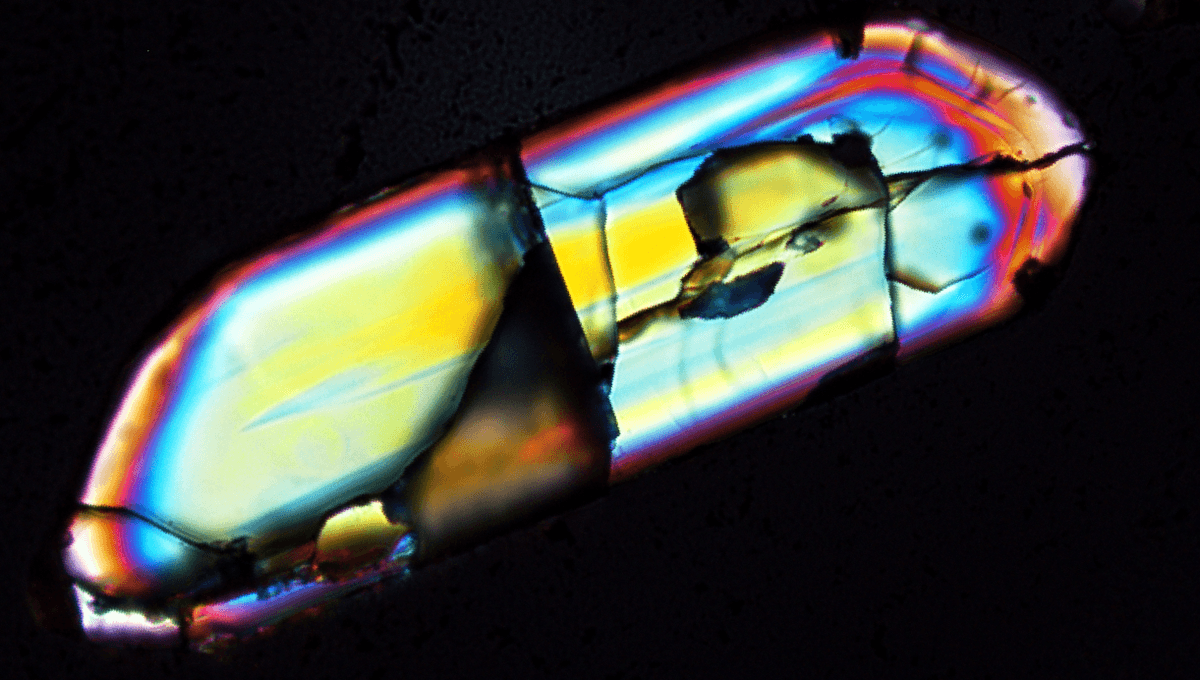The world’s oldest crystals show evidence of exposure to both fresh and salt water during their formation, a new study reports. This indicates that the very early Earth had both oceans and land on which rainwater could collect. Although it is hell in many ways, it indicates a planet much more similar to the one we know today than anything else in the solar system, and potential for life to evolve.
Most of the remains of early Earth have long since been recycled through the mantle, leaving nothing left to explore. The Jack Hills in Western Australia contain zircon crystals that are up to 4.4 billion years old. They are small and bound in significantly younger sedimentary rocks, but these are the oldest minerals on Earth and provide crucial clues about the state of the Earth when they formed.
Many zircons show that they formed in water, and the type of oxygen in them reveals the nature of water. The oceans contain water that consists mainly of oxygen-16 atoms, but also some oxygen-18. “When water evaporates, oxygen-16 evaporates more,” Dr Hugo Olierrook from Curtin University told IFLScience, because it is easier for the lighter molecules to escape. “It is mainly determined by the temperature, closer to the poles it becomes even lighter.” When the evaporated molecules fall as rain, the resulting lakes have reduced the amount of oxygen-18.
Billions of years later, Olierrook is part of a team that has determined from their isotope ratio the type of water in which the zircons were formed. The vast majority of the Jack Hills zircons the team studied were formed either inside the Earth, without any exposure to water, or beneath the ocean. However, a small portion has isotope values consistent with formation in rainwater. Notably, within the studied sample, all of these date from two time periods: a narrow band from about 3.4 billion years ago, and from 3.9-4.02 billion years ago.
Today the Jack Hills are a rocky and arid area, but in the early Earth they formed largely beneath the oceans, while some supported freshwater lakes.
Image courtesy of Simon Wilde
Previously, the oldest geological evidence of a water cycle dates from 3.2 billion years ago. Geologists were convinced that the cycle began well before that, but could not know how long before that.
“Around the year 2000, the big theory was that the Earth was completely dry four billion years ago,” Olierrook told IFLScience. “It was a desolate landscape, the sky was orange, the ground was brown. Then in 2001, evidence of water from more than 4 billion years ago was found. We didn’t know the composition, but it was exciting enough to change the paradigm.” This caused a complete reversal, with the general assumption at the time being that the entire Earth was probably covered by a global ocean, with at most small islands protruding through it.
However, the work Olierook and his colleagues have done shows that there must have been a country at that time where freshwater lakes could form, otherwise all the rain would have mixed with seawater without changing the isotope ratio.
The fact that freshwater zircons are so rare may indicate that such land was not particularly abundant, but that only tells the story in one spot on the globe. “About 5-10 percent of Jack Hills zircons are 4 billion years or older,” Olierook told IFLScience. “The second highest rate anywhere else is one in 10,000.” This, he ruefully acknowledged, “distorts our understanding of the early Earth.” Perhaps large dry areas existed half a world away at the time, and have since been recycled by the mantle.
The absence of freshwater zircons before 4.1 billion years ago, or between the two periods, also does not prove that land did not exist at that time. It may simply be missing from the limited sample the team had to work with.
The debate continues over whether life emerged around hydrothermal vents at the bottom of the ocean, or in a “warm little pond,” as Darwin proposed. This work shows that both were present very early on to make both options possible.
The research has been published in Nature Geoscience.
